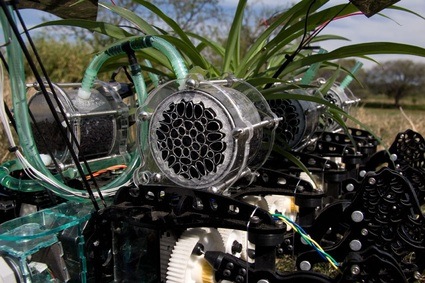Bionic Learning Network
Inspired by nature
Nature never ceases to amaze us with its aesthetic beauty. It is no surprise therefore that nature’s fascinating creatures also served as inspiration for the new projects of Festo’s Bionic Learning Network.
[...]
The Bionic Learning Network is part of Festo’s commitment to technical education and training. In cooperation with students, major-name universities, institutes and development companies, Festo supports projects and prototypes which extend beyond its core segments of Automation and Didactic and which may produce interesting application fields of the future. The aim is to make automated movements even more efficient and productive with the aid of bionics. The Bionic Learning Network demonstrates fascinating solutions to complex problems.Festo - Bionic Learning Network 2010
AquaPenguin
AquaPenguins - technology-bearers as autonomous underwater vehicles
BionicTripod with FinGripper
BionicTripod with FinGripper – versatile movement and adaptive grasping
AirArm – an assistant robot
at the human-machine interface
Molecubes
Molecubes – an attractive programmable robotics system
- Festo United States - Bionic Learning Network
- YouTube - Festo - Bionic Learning Network 2010 (version en)
- Festo United States - AquaPenguin
- YouTube - Festo Aqua Penguin
- Festo United States - AirPenguin
- YouTube - Festo AirPenguin
- Festo United States - iFab
- YouTube - Festo iFab
- Festo United States - BionicTripod with FinGripper
- YouTube - Bionic Tripod 2.0 - Festo
- Festo United States - AirArm
- YouTube - Festo - Airic's_arm
- Festo United States - Molecubes
- YouTube - Festo Molecubes
Related:
- Festo United States - CyberKite
- YouTube - Festo CyberKite
- Festo - InteractiveWall
- YouTube - Festo InteractiveWall
- http://www3.festo.com/__C1256E6F00363F3C.nsf/4B6A584576295BD5C1256DB100445113/89C4A56AB9433338C125742C0057DA36
- Festo Tentacle Arm Actually Elephant’s Trunk | BotJunkie
- Meet the Matrix, er, Elephant Trunk-Inspired Arm of Your Future Robot Overlord | Fast Company



































